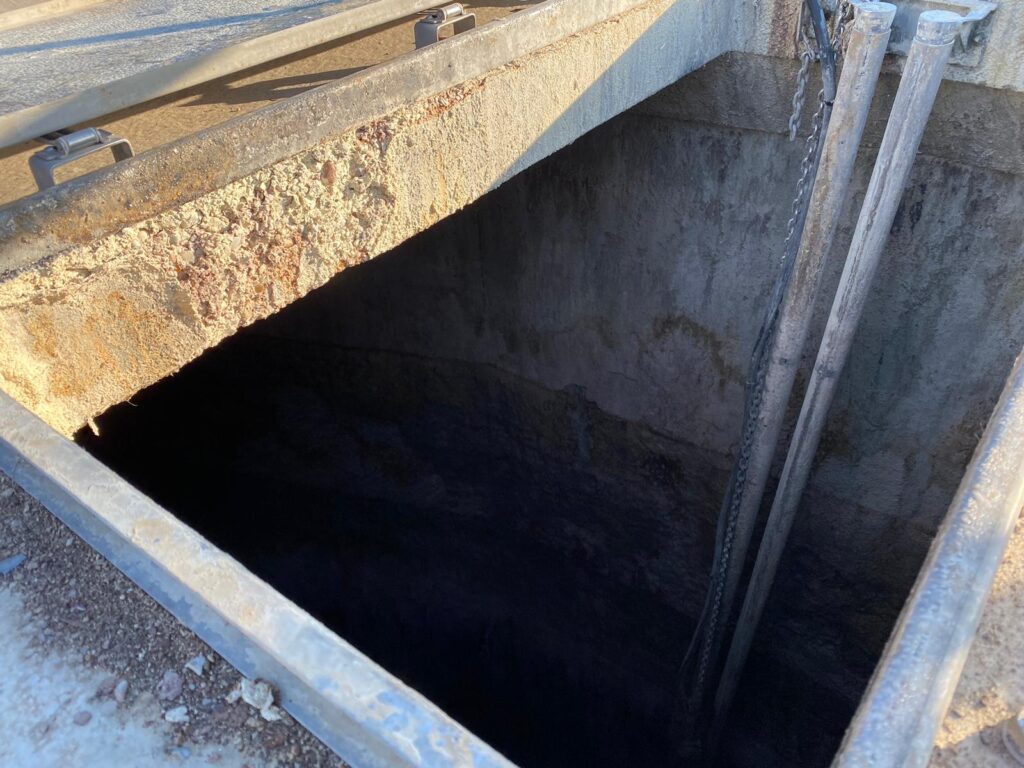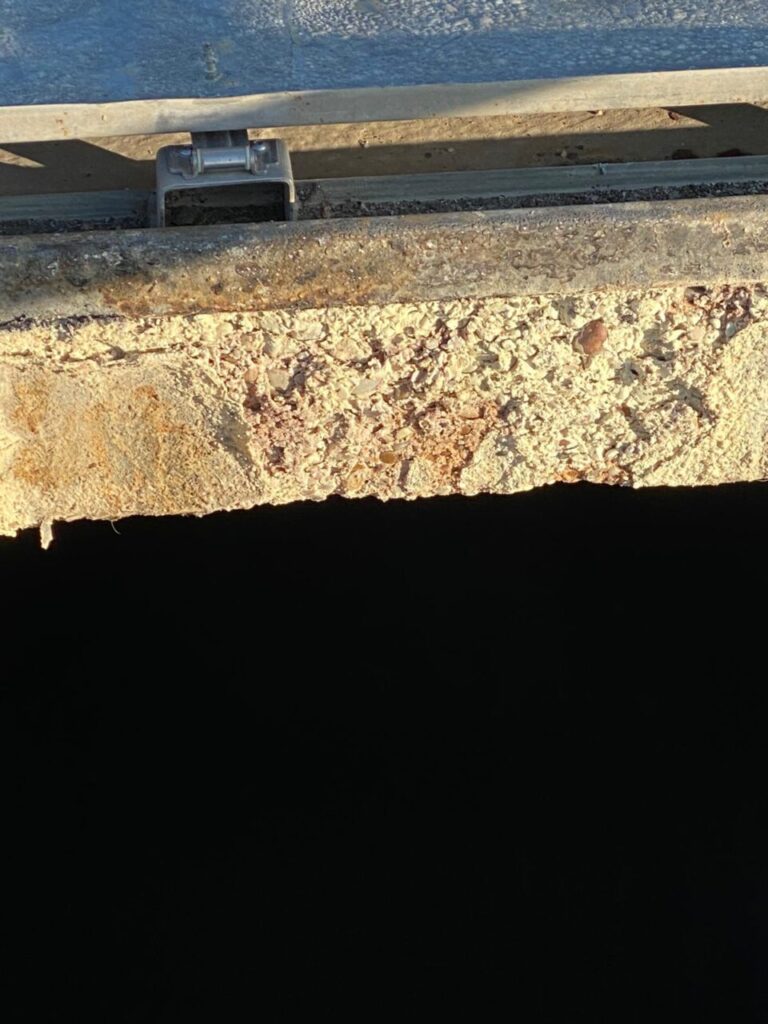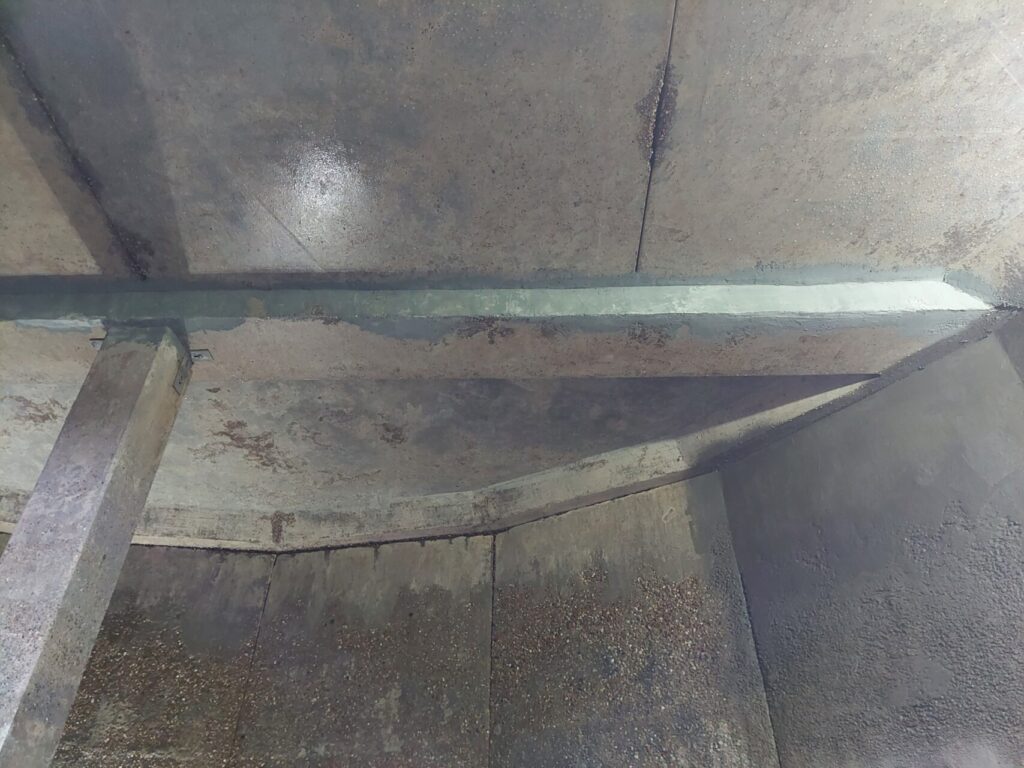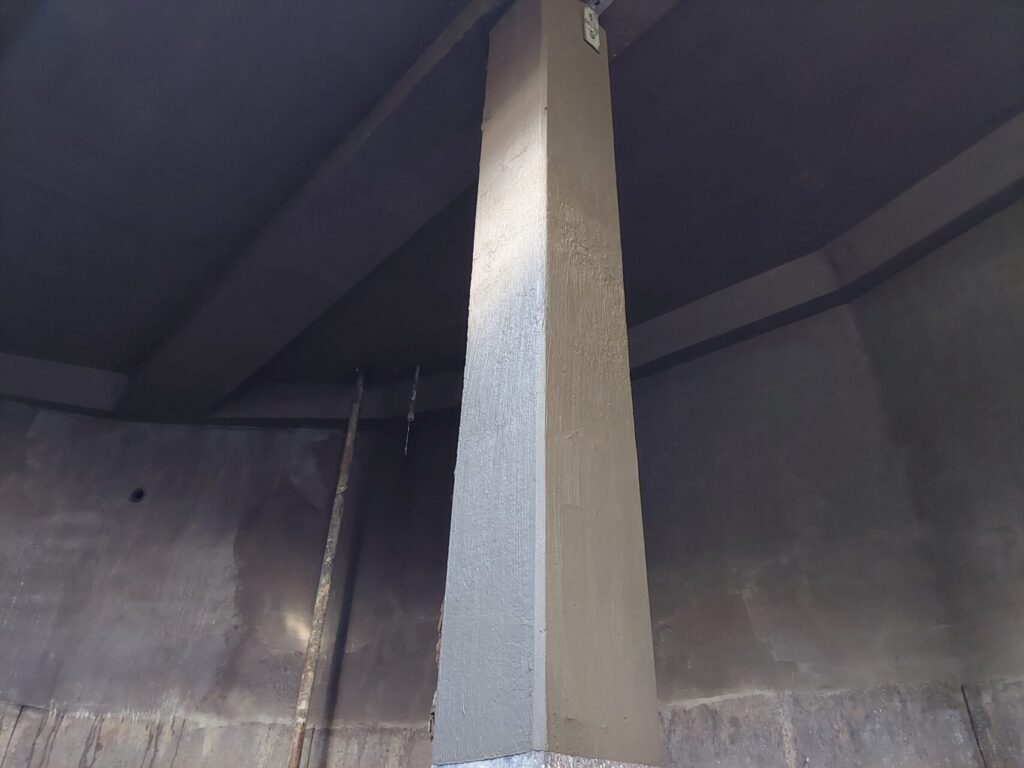As part of our standard tank lining quality assurance prior to any materials being applied the climatic conditions were tested and recorded to ensure compliance with the manufacturers recommendations.
Any concrete repairs required were made using Remmers Betofix R2 concrete repair mortar. This material is polymer rich and with its smaller aggregate size can be taken to a feather edge, thus meaning break out and HAV exposure was avoided.
Once cured all surfaces to be coated were primed by applying Remmers Kiesol diluted 1:1 with clean water to aid penetration into the concrete matrix.
Remmers WP Sulfatex was then applied by method of render pump and sponge float to the damp substrate to a thickness of 3mm. Once the render had set, but not yet fully cured Remmers Kiesol was applied neat to the surface by method of low pressure sprayer. This process of silicification provides additional chemical resistance in waste water type environments.






